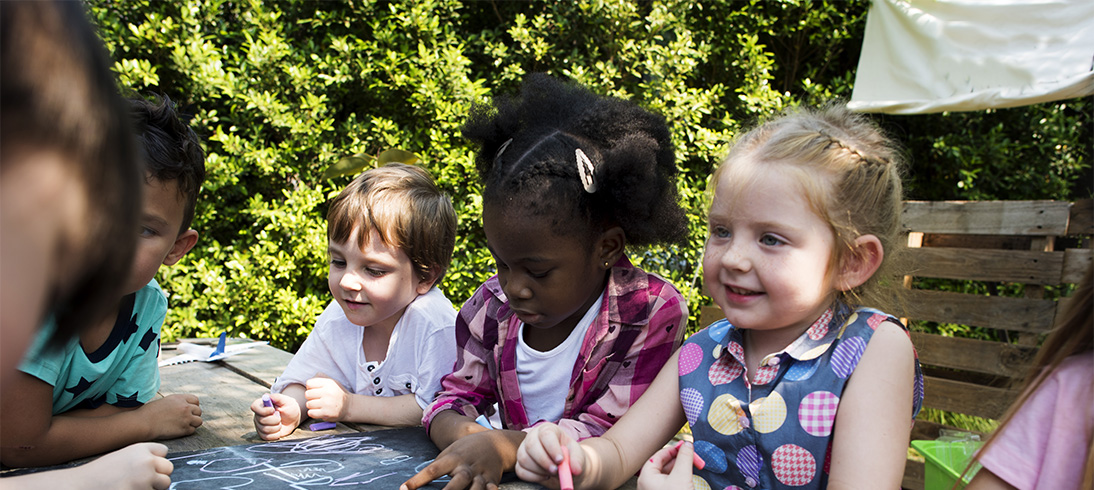The Montessori Method
Learning progression and appropriate materials and lessons are all part of adhering to the Montessori method first created by the acclaimed Dr. Maria Montessori. Based on this time-tested approach to development, students are introduced to practical life skills, language, math, social sciences and sensorial skills, during a three-year educational progression.
Practical Life Skills
Practical Life exercises help to instill care for self, others, and the environment. Activities include many of the tasks children see as part of the daily routine in their home, such as pouring, buttoning, sorting, along with exercises of grace and courtesy. Through these tasks, children develop muscular coordination, enabling movement and exploration of their surroundings. They learn to work at a task from beginning to end, and to develop their powers of control and concentration.
Language
In Montessori classrooms, reading is taught with the ‘phonetic’ method – learning the sounds of the letters in preparation for reading and word building. We use the combination of the Alphabet phonics lessons and the Montessori language approach. When ready, students participate in a Reading and Writing program.
Math
Early Math activities help children learn and understand number concepts by manipulating tactile materials. This work gives children a solid understanding of basic mathematical principles, prepares them for later abstract reasoning, and helps to develop problem-solving capabilities.
Social Sciences
Our Social Sciences curriculum explores the areas of science, social studies, geography, art and history. Children are exposed to a rich, stimulating variety of work through hands-on learning. Working with the cultural materials help children become aware that they are part of the greater family of humanity.
Sensorial
Sensorial Materials serve as tools for development. Children build cognitive skills, and learn to order and classify impressions by touching, seeing, smelling, tasting, listening, and exploring the physical properties of their environment.

